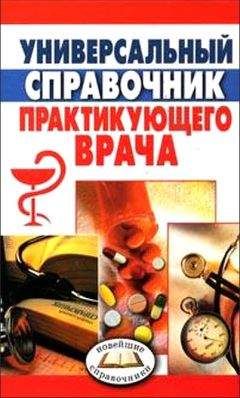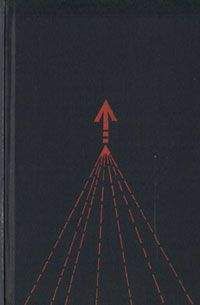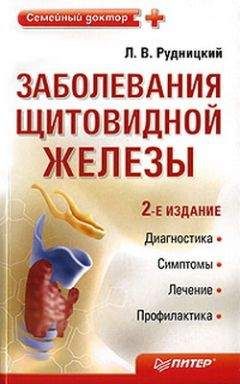Вейкко Тэхкэ - ПСИХИКА И ЕЕ ЛЕЧЕНИЕ: Психоаналитический подход

Скачивание начинается... Если скачивание не началось автоматически, пожалуйста нажмите на эту ссылку.
Жалоба
Напишите нам, и мы в срочном порядке примем меры.
Описание книги "ПСИХИКА И ЕЕ ЛЕЧЕНИЕ: Психоаналитический подход"
Описание и краткое содержание "ПСИХИКА И ЕЕ ЛЕЧЕНИЕ: Психоаналитический подход" читать бесплатно онлайн.
Вейкко Тэхкэ.
Психика и её лечение:
психоаналитический подход
В данной монографии дается описание как общей психоаналитической теории развития человеческой психики, так и теории природы и элементов психоаналитического понимания, и приложения двух этих теорий к психоаналитическому лечению пациентов, представляющих психотический, пограничный и невротический уровни психопатологии. Книга финского психоаналитика признана специалистами лучшим на сегодняшний день отражением западного психоанализа.
Книга адресована как профессиональным психологам, так и всем тем, кто интересуется данной тематикой.
Veikko Tahka. MIND AND ITS TREATMENT: A Psychoanalytic Approach
«Психика и ее лечение» Вейкко Тэхкэ – результат более чем сорокалетнего научного опыта финского психоаналитика, исследователя, клинициста и преподавателя – в действительности не одна, а скорее две книги. Во-первых, это книга о развитии психики, динамическом психическом эволюционном процессе с его самых ранних начал до достижения личной автономии и эмансипации, то есть взрослости. Со всеми возможностями на этом пути для неадекватного, нарушенного и отклоняющегося развития или недоразвития. О возникновении множества психических расстройств психопатологического спектра, явно психотических, многообразно пограничных и типично невротических. И во-вторых, эта книга о лечении, психоаналитической терапии этого множества недугов.
Knight, R. P. (1940), Introjection, projection, and identification. Psychoanal. Quart.. 9:334-341.
(1953a), Borderline states. Bull. Menn. Clinic, 17:1-12.
(1953b), Management and psychotherapy of the borderline schizophrenic patient. Bull. Menn. Clinic, 17:139-150.
Kohut. H. (1959), Introspection, empathy and psychoanalysis. J. Amer. Psychoanal. Assn., 7:459-483.
(1966), Forms and transformations of narcissism, J. Amer. Psychoanal. Assn., 14:243-272.
(1971), The Analysis of the Self. New York: International Universities Press.
(1972), Thoughts on narcissism and narcissistic rage. The Psychoanalytic Study of the Child, 27:360-400. New York: Quadrangle Books.
(1977), The Restoration of the Self. New York: International Universities Press.
(1984), How Does Analysis Cure? Chicago: University of Chicago Press.
Wolf, E. S. (1978), The disorders of the self and their treatment: An outline. Internal. J. Psycho-Anal., 59:413-426.
Kris, E. (1956), The recovery of childhood memories in psychoanalysis. The Psychoanalytic Study of the Child, 11:54– 88. New York: International Universities Press.
Kuhn, T. (1962), The Structure of Scientific Revolutions. Chicago: University of Chicago Press.
Lampl-de Groot. J. (1946), The pre-oedipal phase in the development of the male child. The Psychoanalytic Study of the Child, 2:75-83. New York: International Universities Press.
Langs, R. (J973), The Technique of Psychoanalytic Psychotherapy, Vol. I. New York: Jason Aronson.
(1976), The Bipersonal Field. New York: Jason Aronson.
Laplanche, 1., & Pontalis, J.-B. (1967), The Language of Psycho-Analysis. London: Hogarth Press, 1973.
Laufer, M. (1964), Ego ideal and pseudo ego ideal in adolescence. The Psychoanalytic Study of Hie Child, 19:196-221. New York: International Universities Press.
(1965), Assessment of adolescent disturbances: The application of Anna Freud's diagnostic profile. The Psychoanalytic Study of the Child, 20:99-123. New York: International Universities Press.
Lesche, C. (1973), On the metascience of psychoanalysis. The Human Context, 5:268-284.
Levy.S.T. (1985), Empathy and psychoanalytic technique. J. Amer. Psychoanal. Assn.. 33:353-378.
Lewin, B. D. (1950), The Psychoanalysis of Elation. New York: W. W. Norton.
Lichtenstein, H. (1961), Identity and sexuality. J. Amer. Psy-hoanal. Assn., 9:179-260.
(1964), The role of narcissism in the emergence and maintenance of a primary identity. Internal. J. Psycho-Anal., 12:49-56.
(1977), The Dilemma of Human identity. New York: Jason Aronson. Lipson, С. Т. (1963), Denial and mourning. Internal, j. Psycho-Anal., 44:104-107.
Little, M. (1951), Countertransference and the patient's response to it. Intenat. J. Psycho-Anal.. 33:32-40.
(1957), «R» – the analyst's total response to his patient's needs. Internal. J. Psycho-Anal., 38:245-254.
Loewald, H. W. (1960), On the therapeutic action of psychoanalysis. Internal. J. Psycho-Anal., 41 :16:-33.
(1962), Internalization, separation, mourning and superego. Psychoanat. Quart., 31:483-504.
(1971), On motivation and instinct theory. The Psychoanalytic Study of the Child. 26:91-128. New York: Quadrangle Books.»
(1978), The waning of the Oedipus complex. J. Amer. Psy-choanal. Assn., 27:751-775.
Lorand, S. (1946), Technique of Psychoanalytic Therapy. New York: International Universities Press.
Mahler, M. S. (1952), On child psychosis and schizophrenia: Autistic and symbiotic infantile psychoses. The Psychoanalytic Study of the Child, 7:286-305. New York: International Universities Press.
(1963), Thoughts about development and individuation. The Psychoanalytic Study of the Child, 18:307-324. New York: International Universities Press.
(1968), On Human Symbiosis and the Vicissitudes of Individuation. New York: International Universities Press.
Gosliner, B.J. (1955), On symbiotic child psychosis: Genetic, dynamic and restitutive aspects. The Psychoanalytic Study of the Child, 10:195-212. New York: International Universities Press.
McDewitt, J. B. (1982). Thoughts on the emergence of the sense of self with particular emphasis on the body self. J. Amer. Psychoanal. Assn., 30:827-848.
Pine, F., & Bergman, A. (1975), The Psychological Birth of the Human Infant. New York: Basic Books.
Malin, A., & Grotstein, (. S. (1966), Projective identification in the therapeutic process. Internal. J. Psycho-Anal.. 42:26-31.
McDewitt, J. В., & Mahler, M. S. (1986), Object constancy, individuality, and internalization. In: Self and Object Constancy, ed. R. F. Lax, S. Bach, & J. A. Burland. New York: Guilford Press, pp. 11-2&
Meissner, W. W. (1981), Internalization in Psychoanalysis; Psychological Issues, Monogr. 50. New York: International Universities Press.
(1984), The Borderline Spectrum: Differential Diagnosis and Developmental Issues. New York: Jason Aronson.
Menninger, K. (1958). Theory of Psychoanalytic Technique. New York: Basic Books.
Michels, R. (1985), Introduction to panel: Perspectives on the nature of psychic reality. J. Amer. Psychoanal. Assn., 33:515-519.
Modell, A. H. (1968), Object Love and Reality. New York: International Universities Press.
(1973), Affects and psychoanalytic knowledge. Annual of Psychoanalysis. 1:117-124. New York: Quadrangle Books.
(1978), The nature of psychoanalytic knowledge. J. Amer. Psychoanal. Assn., 26:641-658.
(1984), Psychoanalysis in a New Context. New York: International Universities Press.
Money-Kyrle, R. E. (1956), Normal countertransference and some of its deviations. Internal. J. Psycho-Anal., 37:360-366.
Moore, B. E., & Fine, B. D. (1968), A Glossary of Psychoanalytic Terms and Concepts. New York: American Psychoanalytic Association.
Nagera, H. (1966), Early Childhood Disturbances, the Infantile Neurosis and the Adulthood Disturbances—Problems of a Developmental Psychoanalytical Psychology. New York: International Universities Press.
Nemiah.J.C. (1975), Denial revisited. Psychother. Psychosom., 26:140-147.
Novey. S. (1959), A clinical view of affect theory in psychoanalysis. Internat. J. Psycho-Anal., 40:94-104.
Novick, J. (1982), Termination: Themes and issues. Psychoanal. Inquiry, 2:329-365.
Kelly, K. (1970), Projection and externalization. The Psychoanalytic Study of the Child, 25:69-95. New York: International Universities Press.
Nunberg, H. (1931), The synthetic function of the ego. Internal. J. Psycho-Anal., 12:123-140.
Ogden, T. (1979), On projective identification. Internat. J. Psycho-Anal., 60:357-373.
(1982), Projective Identification and Psychotherapeutic Technique. New York: Jason Aronson.
Olden, С (1953), On adult empathy with children. The Psychoanalytic Study of the Child, 8:111-126. New York: International Universities Press.
(1958), Notes on the development of empathy. The Psychoanalytic Study of the Child, 13:505-518. New York: International Universities Press.
Olinick, S. (1969), On empathy and regression in the service of other. Brit. J. Med. Psychol.. 42:41-49.
Panel (1958), Problems of identity. D. L. Rubinfine, reporter. J. Amer. Psychoanal. Assn.. 6:131-142.
(1968), Object constancy and other problems. J. A. Arlow, moderator. Intermit. J. Psycho-Anal., 49:506-512.
(1969), Problems of termination in the analysis of the adults. J. Amer. Psychoanal. Assn., 17:222-237.
(1975), Termination: Problems and techniques. W. S. Rob-bins, reporter. J. Amer. Psychoanal. Assn., 23:166-176.
Pao, P. (1979), Schizophrenic Disorders. New York: International Universities Press.
Piaget, J. (1937), The Construction of Reality in the Child. New York: Basic Books.
Pollock, G. H. (1961), Mourning and adaptation. Internal. J. Psycho-Anal., 62:341-36).
Post, S. L. (1980), Origins, elements and functions of therapeutic empathy. Internat. J. Psycho-Anal., 61:277-293.
Racker, H. (1957), The meanings and uses of countertransfer-ence. Internat. J. Psycho-Anal.. 34:313-324.
(1968), Transference and Countertransference. New York: International Universities Press.
Rangell, L. (1954), Similarities and differences between psychoanalysis and dynamic psychotherapy. J. Amer. Psychoanal. Assn., 2:734—744.
(1966), An overview of the ending of an analysis. In: Psychoanalysis in the Americas, eo. R. E. Lilman. New York: International Universities Press, pp. 141-165.
(1967), Psychoanalysis, affects, and the «human core.» On the relationship of psychoanalysis to the behavioral sciences. Psychoanal. Quart., 36:172-202.
Rapaport, D. (1951), The conceptual model of psychoanalysis. In: The Collected Papers of David Rapaport, ed. M. M. Gill. New York: Basic Books, 1967, pp.405-431.
(1953), On the psycho-analytic theory of affects. Internat, J. Psycho-Anal., 34:177-198.
(1957), Cognitive structures. In: The Collected Papers of David Rapaport, ed. M. M. Gill. New York: Basic Books, 1967, pp. 631-664.
(1960), The Structure of Psychoanalytic Theory, Psychological Issues, Monogr. 6. New York: International Universities Press.
Rappaport, E. (1956), The management of an erotized transference. Psychoanal. Quart., 25:515-529.
Reich, A. (1950), On the termination of analysis. In: Psychoanalytic Contributions. New York: International Universities Press, 1973, pp. 121-135.
(1951), On countertransference. Internat. J. Psycho-Anal., 32:25-31.
(1960). Further remarks on countertransference. In: Psychoanalytic Contributions. New York: International Universities Press, 1973, pp. 271-287.
(1966), Empathy and countertransference. In: Psychoanalytic Contributions. New York: International Universities Press, pp. 344—360.
Reich, W. (1933), Character Analysis. New York: Orgone Institute Press.
Reik, T. (1937), Surprise and the Psychoanalyst. New York: Dutton.
Ricoeur, P. (1970), Freud and Philosophy. An Essay on Interpretation. New Haven, CT: Yale University Press.
Rinsley, D. B. (1986), Object constancy, object permanency and personality disorders. In: Self and Object Constancy, ed. R. Lax, S. Bach, & J. A. Burland. New York: Guilford Press.
Robbins, M. 0. (1976), Borderline personality organizations: The need for a new theory. J. Amer. Psychoanal. Assn., 24:831-853.
Roiphe, H., & Galenson, E. (1977), Some suggested revisions concerning early female development. In: Female Psychology. Contemporary Psychoanalytic Views, ed. H. Blum. New York: International Universities Press.
Rosenfeld, H. (1952), Transference-phenomena and transference analysis in an acute catatonic schizophrenic patient. Internat, J. Psycho-Anal., 33:457-464.
(1954), Considerations regarding the psychoanalytic approach to acute and chronic schizophrenia. Internat, J. Psycho-Anal., 35:135-140.
(1965), Psychotic States. New York: International Universities Press. Rycroft, C. (1968), A Critical Dictionary of Psychoanalysis. London: Nelson. Sandier, J. (1960), On the concept of the superego. The Psychoanalytic Study of the Child. 15:128-162. New York: International Universities Press. *
(1976), Countertransference and role-responsiveness. Internat. Rev. Psycho-Anal., 3:43-47.
(1986), Comments on the self and its objects. In: Self and Object Constancy, ed. R. Lax, S. Bach, & J. A. Burland. New York: Guilford Press.
(1987), The concept of projective identification. In: Projection, Identification, Projective Identification, ed.J. Sandier. Madison, CT: International Universities Press, pp. 13-26.
(1988), Psychoanalytic technique and «Analysis terminable and interminable.» Internat, J. Psycho-Anal., 69:335-345.
Holder, A., & Meers, D. (1963). The ego ideal and the ideal self. The Psychoanalytic Study of the Child, 18:139-158. New York: International Universities Press.
Joffe, W. G. (1965), Notes on childhood depression. Internat. J. Psycho-Anal., 46:88-96.
(1969), Towards a basic psychoanalytic model. Internat, J. Psycho-Anal., 50:79-90.
Rosenblatt, B. (1962), The concept of the representational world. The Psychoanalytic Study of the Child, 17:128-145. New York: International Universities Press.
Saul, L.J. (1962), The erotic transference. Psychoanal. Quart.. 31:54-61.
Schachter, J. (1990), Post-termination patient-analyst contact: I. Analyst's attitudes and experiences; II. Impact on patients. Internat. J. Psycho-Anal., 71:475-485.
Schafer, R. (1959), Generative empathy in the treatment situation. Psychoanal. Quart., 28:342-373.
(1964), The clinical analysis of affects. J. Amer. Psychoanal. Assn., 12:275-299.
(1968), Aspects of Internalization. New York: International Universities Press.
(1972), Internalization: Process or Fantasy? The Psychoanalytic Study of the Child. 27:411-446. New York: Quadrangle Books. i
(1976), A New Language for Psychoanalysis. New Haven, CT: Yale University Press.
Schaffer, N. D. (1982), The borderline patient and affirmative interpretation. Bull. Menn. Clinic. 50:148-162.
Schimek, J. G. (1975), The interpretations of the past. J. Amer. Psychoanal. Assn., 23:845-865.
Schlesinger, N., & Robbins, F. (1974), Assessment and follow-up in psycho-analysis. J. Amer. Psychoanal. Assn., 22:542-567.
Schwartz, F. (1981), Psychic structure. Internat. J. Psycho-Anal., 62:61-72.
Schwing. G. (1940), A Way to the Soul of the Mentally 111. New York: International Universities Press, 1954.
Searles, H. F. (1965), Collected Papers on Schizophrenia and Related Subjects. New York: International Universities Press.
(1979), Countertransference and Related Subjects. New York: International Universities Press.
(1986), My Work with Borderline Patients. Northvale, N J: Jason Aronson.
Sechehaye, M. A. (1951), Symbolic Realization. New York: International Universities Press.
Segal, H. (1973), An Introduction to the Work of Melanie Klein. New York: Basic Books. Shapiro, T. (1974), The development and distortions of empathy. Psychoanal. Quart., 43:4-25.
Sifneos, P. (1973), The prevalence of «alexithymic» characteristics in psychosomatic patients. Psychother. & Psycho-som., 22:255-262.
Slatker, E. (1987), Countertransference. Northvale, NJ: Jason Aronson. Spiegel. L. A. (1951), Review of contributions to a psychoanalytic theory of adolescence. The Psychoanalytic Study of the Child, 6:375-393. New York: International Universities Press.
Spitz, R. A. (1945), Hospitalism: An inquiry into the genesis of psychiatric conditions in early childhood. The Psychoanalytic Study of the Child, 1:53-74. New York: International Universities Press.
(1946), Anaclitic depression: An inquiry into the genesis of psychiatric conditions in early childhood.' The Psychoanalytic Study of the Child, 2:113-117. New York: International Universities Press.
(1956), Some observations on psychiatric stress in infancy. In: Fifth Annual Report on Stress, ed. H. Selye & G. Heuser. New York: M.D. Publications, pp. 193-204.
(1959), A Genetic Field Theory of Ego Formation. New York: International Universities Press.
(1965), The First Year of Life. New York: International Universities Press. *
(1966), Metapsychology and direct infant observation. In: Psychoanalysis—A General Psychology: Essays in Honor of Heinz Hartmann, ed. R. M. Loewenstein, L. H. Newman, M. Schur, & A. J. Solnit. New York: International Universities Press, pp. 123-151.
Spruiell, V. (1974), Theories of the treatment of narcissistic personalities. J. Amer. Psychoanal. Assn., 22:268-278.
Подписывайтесь на наши страницы в социальных сетях.
Будьте в курсе последних книжных новинок, комментируйте, обсуждайте. Мы ждём Вас!
Похожие книги на "ПСИХИКА И ЕЕ ЛЕЧЕНИЕ: Психоаналитический подход"
Книги похожие на "ПСИХИКА И ЕЕ ЛЕЧЕНИЕ: Психоаналитический подход" читать онлайн или скачать бесплатно полные версии.
Мы рекомендуем Вам зарегистрироваться либо войти на сайт под своим именем.
Отзывы о "Вейкко Тэхкэ - ПСИХИКА И ЕЕ ЛЕЧЕНИЕ: Психоаналитический подход"
Отзывы читателей о книге "ПСИХИКА И ЕЕ ЛЕЧЕНИЕ: Психоаналитический подход", комментарии и мнения людей о произведении.
























